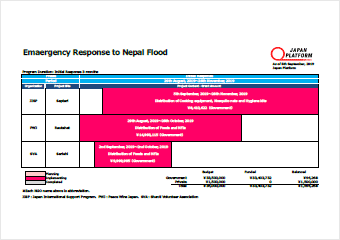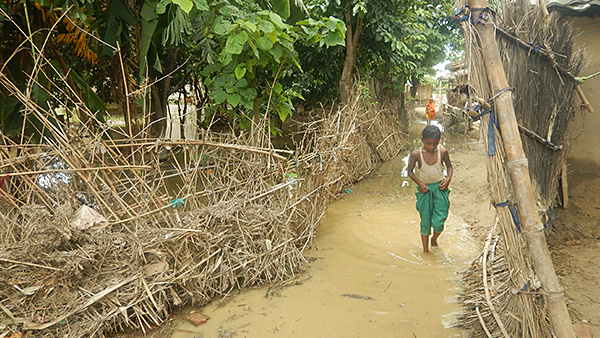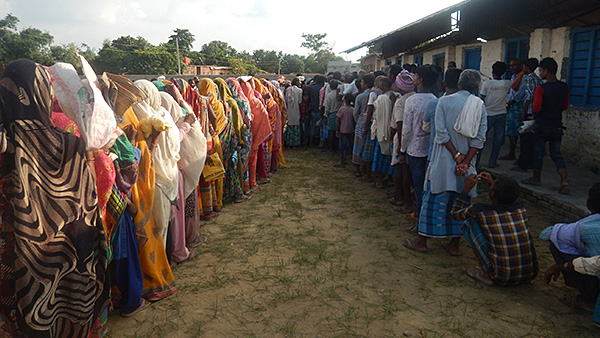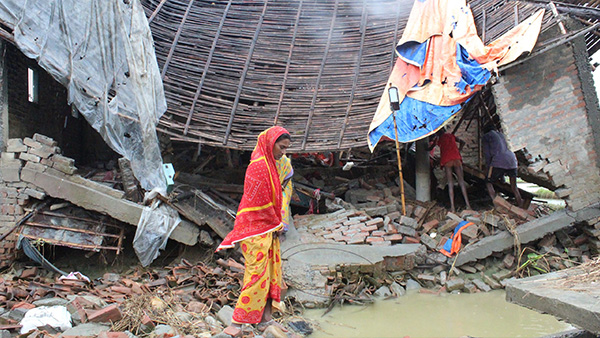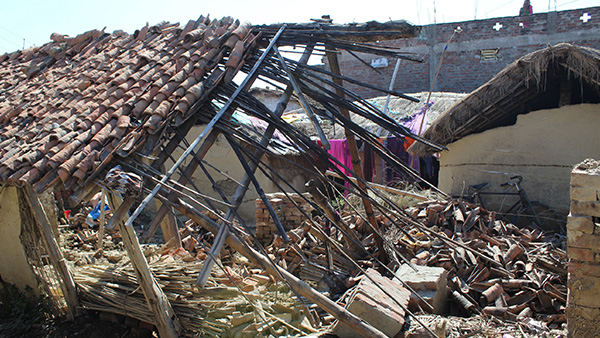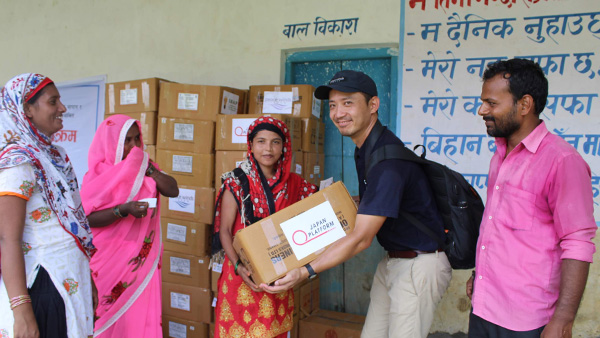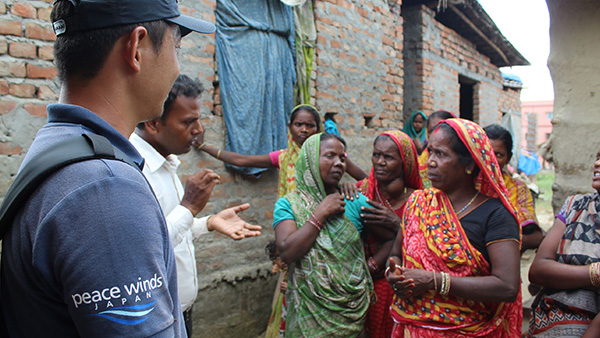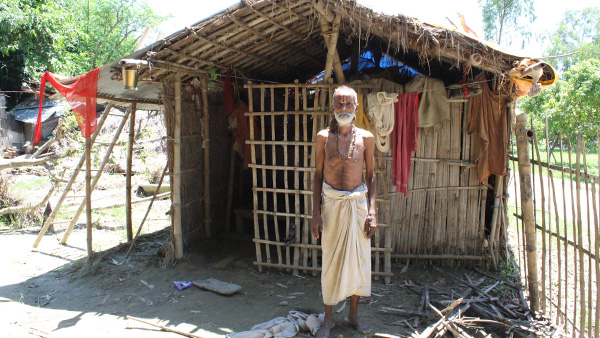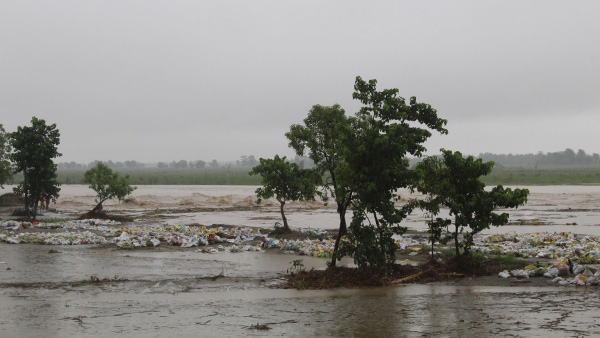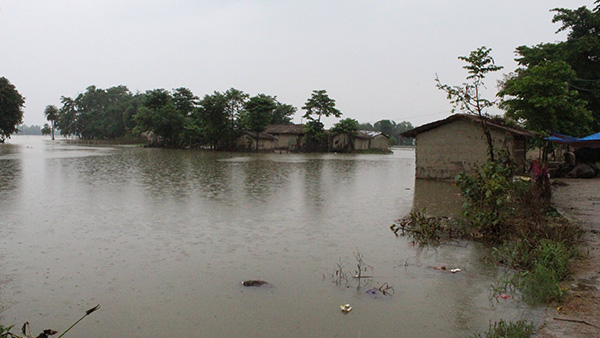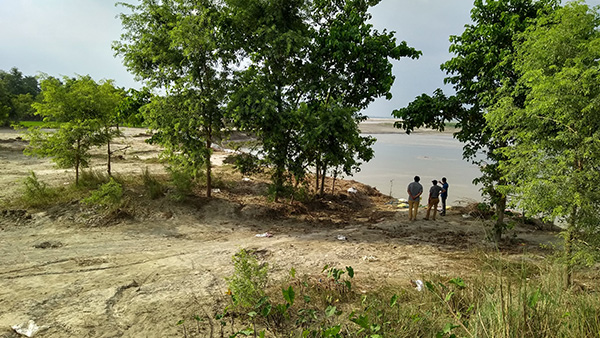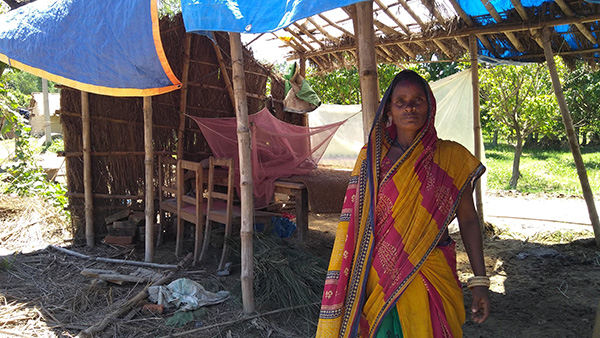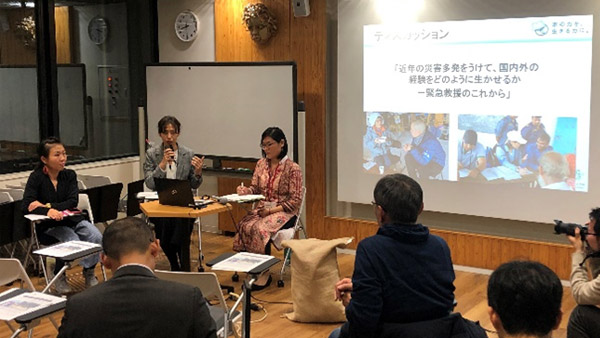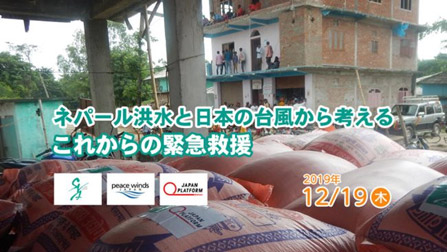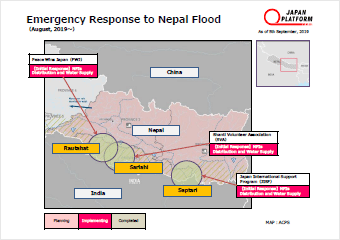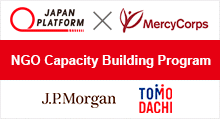Nepal
Emergency Response to Flood, Nepal
Japanese
Emergency Response to Nepal Flood 2019: Reporting Session “Flood in Nepal, Typhoons in Japan, and Thinking about the Future of Emergency Relief”
23rd December 2019 19:30
On December 19, JPF member NGOs Shanti Volunteer Association (SVA) and Peace Winds Japan (PWJ) hosted a reporting session titled “Flood in Nepal, Typhoons in Japan, and Thinking about the Future of Emergency Relief” at the Sacred Heart Institute for Sustainable Future. Yuko Shibata, Emergency Response General Manager, participated in the session as a panelist from JPF.
At the reporting session, General Manager Shibata introduced JPF, explained our criteria for mobilization and the flow of emergency response, and provided an overview of our Emergency Response to Nepal Flood 2019 program. Then spoke the staff from both PWJ and SVA who are in charge of their respective aid programs in Nepal. Both organizations conducted a joint assessment in Nepal and implemented relief item distributions there. They spoke about the state of damages, how the people affected by the flood are doing, what their impressions are of the communities and areas affected, and about the items distributed.
During the second portion of the session, there was a discussion on how best to use domestic and international experiences in the future in light of the frequent disasters we are experiencing in recent years in Japan and overseas. While talking about commonalities and differences among domestic and international programs and about communicating with those affected by disasters, it was pointed out that with programs in Japan, it was harder to maintain a proper distance with those affected by the disasters and that the staff were prone to empathize with them. Moreover, taking the Sphere Standard and other international standards into account, Japan needs to consider several issues including those of evacuation shelters. Still, the disaster prevention measures in Japan, including drills and trainings, were considered useful as points of reference to be applied outside of Japan.
During the Q&A portion with those in the audience, many questions were asked including how local implementation partners are selected, how items for distributions are chosen, and about staff transportation and accommodations in disaster affected areas overseas. Even after the event had officially finished, members of the audience and the panelists engaged in fervent discussions, which showed the deep level of interest in domestic and international disaster relief.
JPF Co-Hosting Reporting Session: “Flood in Nepal, Typhoons in Japan, and Thinking about the Future of Emergency Relief”
3rd December 2019 13:05
JPF will co-host a reporting session with Shanti Volunteer Association (SVA) and Peace Winds Japan (PWJ) titled “Flood in Nepal, Typhoons in Japan, and Thinking about the Future of Emergency Relief” with the Sacred Heart Institute for Sustainable Future also supporting the event.
Date and Time: Thursday 19th December 2019 19:00-20:30
Venue: Be*hive Theater Space, 1st Floor, Sacred Heart Global Plaza (Building No.4)
[Building No.4, University of the Sacred Heart Tokyo, 4-2-24 Hiroo Shibuya-ku Tokyo]
Admissions: Free
Attendance Capacity: 40 persons (first come first served)
In mid-July of 2019, multiple floods occurred in South Asia due to the monsoon. In Nepal where severe damages were sustained, Japanese NGOs implemented emergency relief activities including relief item distributions. At this reporting session, NGO staff members who have been conducting emergency relief for natural disasters, both domestically and internationally, will discuss the similarities and differences between disasters in and outside of Japan and how the knowledge acquired from both contexts can best be used for emergency relief efforts in the future. From JPF, Yuko Shibata, Emergency Response General Manager, will participate as a speaker. For those of you who are interested, please consider joining this event.
- 5th, September, 2019
- 「Activity Map」and「NGO Activities」are updated.
On August 15, 2019, Japan Platform launched assistance program for the affected people of the floods that have persisted in Nepal since July 2019.
<Overview>
- Due to the torrential monsoon rain that began on July 11, 2019, there have been multiple floods and landslides in the border regions of Nepal, India, and Bangladesh. In Nepal, the floods and landslides have affected 410,000 people including 17,000 children, causing 117 deaths (including 51 children), 38 missing persons, and 80 injuries according to the July 28 report from the Nepali government. 20,000 houses have been completely damaged, and 41,300 houses have been partially damaged by the floods[*1].
- Two JPF member NGOs, Shanti Volunteer Association (SVA) and Peace Winds Japan (PWJ), have begun joint emergency assessment on July 23 in and around the Rautahat District of Province No. 2 in Nepal that sustained the severest damages. The assessment showed that there was a lack of food items and other daily necessities due to stored rice and beans being washed away in the flood along with cooking utensils, dishes, beddings, and mosquito nets. There were also heightened risks of diarrhea and infectious diseases with wells being contaminated with human excrements that were discharged into the flood water. Additionally, it had become clear that there were uneven distributions of aid across the affected region due to differences in needs, such as with the neighboring Sarlahi District having more houses that were completely and partially damaged than in Rautahat. Therefore, JPF has found it necessary that we launch this assistance program.
- PWJ and SVA have distributed emergency relief items, even while they were conducting this assessment, in coordination with local partner NGOs, local governments, and UN agencies to implement relief based on better understanding of damages and needs. This was done through close communication with local NGOs and residents to avoid uneven distributions of relief items.
JPF will work with our member NGOs to provide timely emergency aid according to the needs on the ground. Further updates can be found on the JPF website and Facebook page.
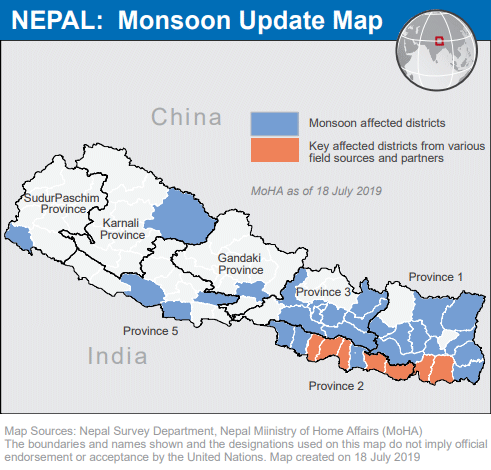
*1: UNICEF、Humanitarian Situation Report (2 Aug 2019)
*Map: Monsoon Flooding Flash Update 3 Office of the Resident Coordinator(18 July 2019)
Overview of Program
| Period | 3 months (Initial Response) |
|---|---|
| Budget | 25 million yen (Government Subsidies) |
| Location | Nepal |
| Content of Aid | Distribution of food, hygiene items, non-food items (NFIs) |
| Implementation Partners (planned) | Peace Winds Japan (PWJ), Shanti Volunteer Association (SVA), etc. |
*Budget and implementation period may be reviewed and adjusted based on the situation on the ground.
NGO Activities
Please see the latest project content · subsidy amount and period.
NGO Activities(PDF 149KB) As of 5 September 2019
